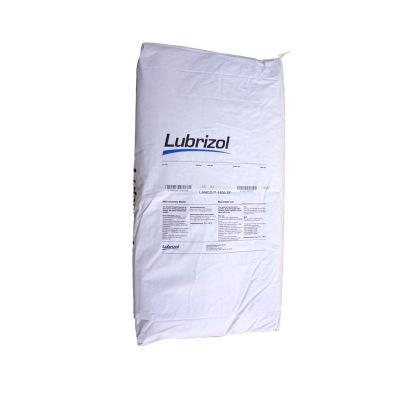PRODUCTDESCRIPTION
Lanco TF 1778 givesvery good slip and abrasion resistance in solvent based and powder coatings.The polymer combination is designed to give very low coefficients of friction,while maintaining excellent compatibility and dispersibility.
FEATURES/BENEFITS
? Verygood slip through lowering the coefficient of friction
? Goodscratch and abrasion resistance, due to hardness of wax combination
? Good metal marking resistance
PHYSICALCHARACTERISTICS*
Appearance free-flowing white powder
Chemical type PTFE / polyethylene wax
Particle Size**,Maximum. (μm) Dv50 6
Dv90 14
Melting point PE (oC) 102
Density (g/cm3) @ 25°C(77°F) 1.04
Acid number (mgKOH/g) <1
Hardness 2
* Property valuesrepresent typical results only and are not to be considered specifications.
** Determined byLaser Diffraction
TYPICALAPPLICATIONS
? Can and coil coatings
? Powder and industrial coatings
? Wood coatings and UV-curing coatings
? Overprintvarnishes, flexo and gravure inks
Based on:
? Acrylics
? Alkyds
? Polyurethanes
? N/C and N/C combination finishes
? Epoxies
? Polyesters
? Hybrid systems
SHELFLIFE/STORAGE
Incorporation | Lanco TF 1778 is very easily dispersible. It can be incorporated using normal stirrers. In very low viscosity systems high shear mixers such as dissolvers may be required. |
Addition levels
| To improve the surface properties such as slip and scratch resistance, addition of 0,5 –2,0% of Lanco TF 1778 is recommended based on total formulation weight. For matting, a combination of Lanco TF 1778 / silica can be used in a ratio of 1:1 to 1:4. The addition level of wax in this case should be 0.5-2.0% based on total formulation weight.
|
For shelf lifeinformation please refer to the packaging label and the Certificate ofAnalysis. It provides the date of manufacturing (DOM) and a recommended re-testdate (RRD). The RRD for Lanco TF 1778 is 1825 days after DOM.
Lanco TF 1778 shouldbe stored on pallets in closed areas. In relatively warm storage areas the bagsshould not be stacked too high. A storage temperature of 40°C should not beexceeded.
REGULATORYSTATUS
Please see the product’s current safety datasheet, SDS, for regulatory information. You can contact us
